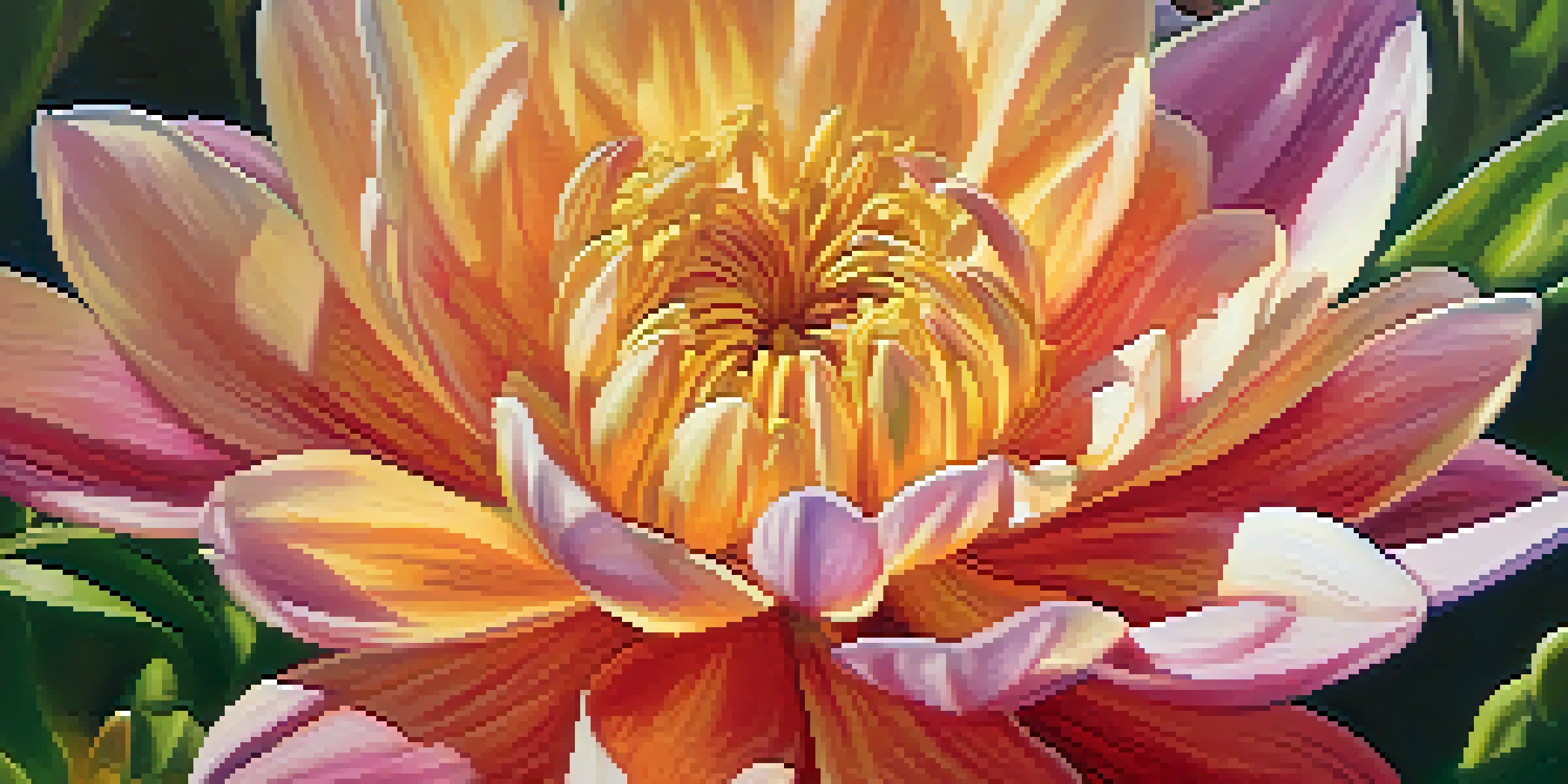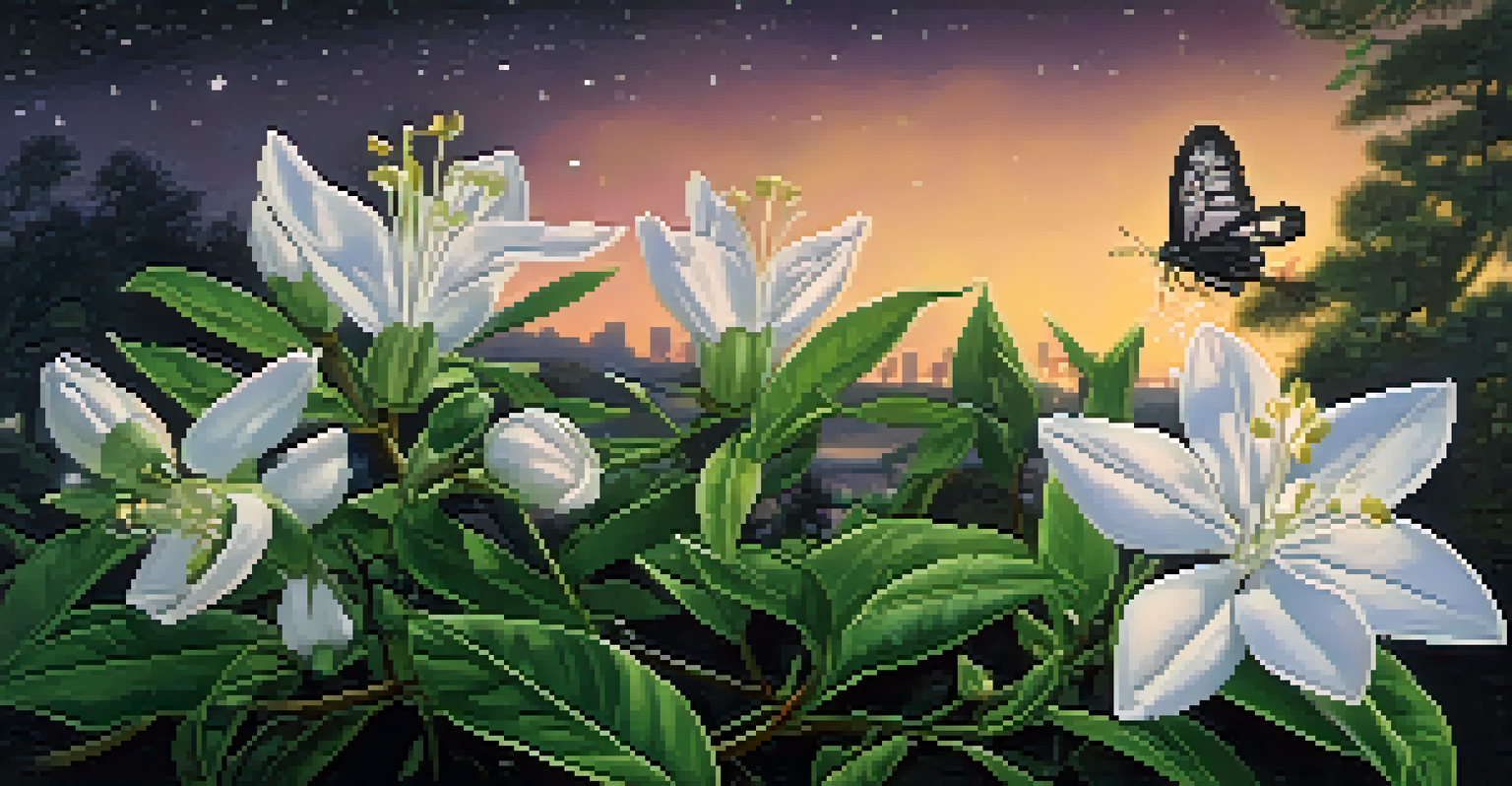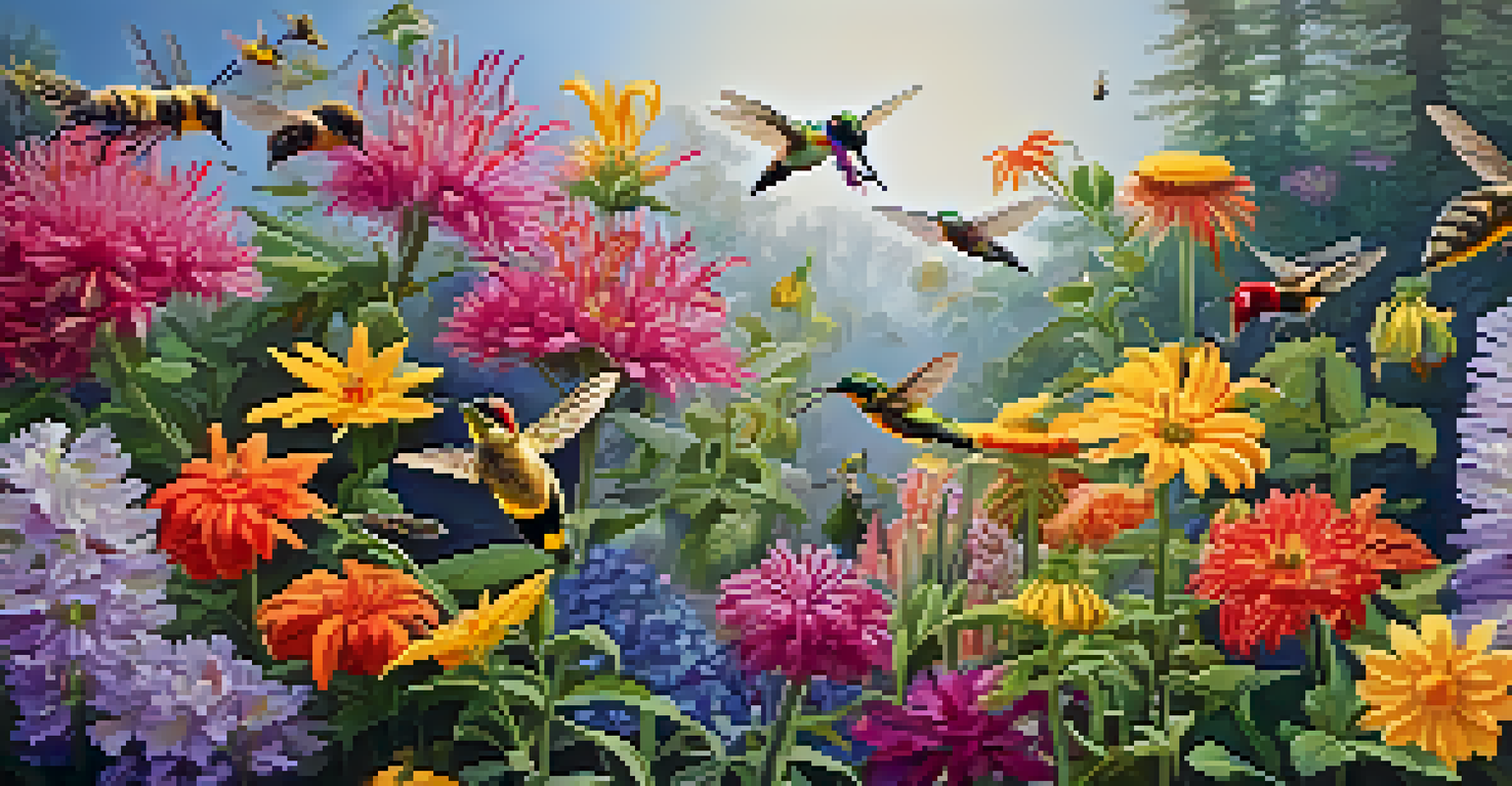Chemical Communication: Plants' Secret Signals to Attract Pollinators

Understanding Chemical Communication in Plants
Chemical communication refers to the way plants send signals through various chemicals to interact with their environment. This intriguing system allows plants to convey messages to pollinators, predators, and even neighboring plants. It's a fascinating example of how life on Earth is interconnected, relying on invisible signals to thrive.
Plants communicate with each other and their environment in ways we are only beginning to understand.
Plants release a variety of volatile organic compounds (VOCs), which are essentially scent molecules that travel through the air. These compounds can attract specific pollinators like bees, butterflies, or birds, depending on the plant species. For instance, some flowers emit sweet fragrances that are irresistible to bees, while others might attract hummingbirds with their bright colors and sugary nectar.
By understanding these chemical signals, we can appreciate the sophisticated strategies plants use to ensure their reproduction. For example, a study found that flowering plants often adjust their scent profiles based on the types of pollinators they aim to attract, showcasing the dynamic nature of plant communication.
The Role of Scent in Attracting Pollinators
Scent plays a crucial role in the intricate dance between plants and pollinators. Many plants rely on their unique fragrances to lure in beneficial insects that help in pollination. This fragrant attraction is not just a random occurrence; it’s a finely-tuned evolutionary strategy that has developed over millions of years.

Take the example of the night-blooming jasmine, which releases a strong, sweet scent after sunset. This timing is perfect for attracting nocturnal pollinators like moths, ensuring that the plant's reproductive needs are met. Similarly, flowers that bloom during the day might release different scents to appeal to daytime pollinators, highlighting the adaptability of plants.
Plants Use Chemical Signals to Communicate
Plants send signals through volatile organic compounds to attract pollinators and interact with their environment.
Interestingly, not all scents are pleasant. Some flowers emit foul odors mimicking rotting meat, which attract specific pollinators like carrion flies. This unconventional strategy demonstrates how diverse and innovative chemical communication can be in the plant kingdom.
Visual Signals: Color and Shape Matter Too
While chemical signals are vital, visual cues such as color and shape also play a significant role in attracting pollinators. Brightly colored flowers are often a signal of nutrient-rich nectar, which draws in insects and birds looking for food. The vibrant hues of flowers are not just for aesthetics; they serve a practical purpose in the survival of the plant species.
Nature is not a place to visit. It is home.
For instance, red flowers are typically associated with hummingbirds, which are attracted to their color and tubular shape that accommodates their long beaks. On the other hand, blue and purple flowers tend to attract bees, as these insects can see these colors distinctly. This visual signaling works hand-in-hand with the chemical cues emitted by the flowers.
Moreover, the arrangement of petals and the overall shape of the flower can indicate to pollinators how to access the nectar, further enhancing the chances of pollination. This synergy between visual and chemical signals boosts the efficiency of pollination, ensuring that plants can reproduce successfully.
How Plants Adapt Their Signals to Pollinator Needs
Plants are remarkably adaptable, adjusting their chemical signals in response to the needs of their pollinators. Research has shown that some plants can change their scent profile based on the specific type of pollinator they wish to attract. This adaptability is crucial for maximizing reproductive success in varying environmental conditions.
For example, certain flowers may produce a higher concentration of specific VOCs when they detect the presence of certain pollinator species nearby. This dynamic response can lead to increased visits from those pollinators, thereby enhancing the chances of successful fertilization. It's a prime example of how interconnected life forms can influence each other.
Adaptability Enhances Pollination Success
Plants can adjust their chemical signals based on the presence of specific pollinators, optimizing their chances of reproduction.
Additionally, plants can also respond to environmental changes such as temperature and humidity, modifying their chemical signals accordingly. This ability to adapt not only helps in attracting the right pollinators but also ensures that plants can thrive in various climates and conditions.
The Impact of Climate Change on Plant Communication
Climate change poses significant challenges to the delicate balance of plant-pollinator interactions. Rising temperatures and shifting weather patterns can disrupt the timing of flowering and the availability of pollinators. This misalignment can lead to decreased pollination efficiency and, ultimately, impact food production and biodiversity.
For instance, some plants may bloom earlier in the spring due to warmer temperatures, but their primary pollinators may not be around yet. This disconnect can lead to reduced seed production and lower plant populations over time. Understanding these effects is crucial for conservation efforts aimed at protecting both plants and their pollinators.
Furthermore, changes in the composition of plant species in a given area can affect the overall pollinator community. As certain plants struggle to adapt to rapid environmental changes, the shifts in available resources can impact the pollinators that rely on them, demonstrating the importance of maintaining healthy ecosystems.
Human Influence on Plant-Pollinator Relationships
Human activities have a profound impact on plant-pollinator relationships, often disrupting the natural signals that plants use to communicate. Urbanization, agricultural practices, and pesticide use can alter the habitats where pollinators thrive, making it challenging for them to find food and suitable nesting sites. These disruptions can lead to a decline in pollinator populations, which in turn affects plant reproduction.
For instance, the use of pesticides can interfere with the olfactory senses of pollinators, making it harder for them to detect the chemical signals from flowers. This can result in decreased visits to plants and lower pollination rates. Sustainable practices, such as organic farming and habitat restoration, can help mitigate these negative effects.
Climate Change Disrupts Plant Interactions
Rising temperatures and changing weather patterns can misalign the timing of flowering with pollinator availability, threatening biodiversity.
By understanding and respecting the intricate communication networks between plants and pollinators, we can take steps to protect these vital relationships. Promoting biodiversity and creating pollinator-friendly environments can enhance the chances of successful communication and ensure the health of ecosystems.
The Future of Chemical Communication Research
The field of chemical communication in plants is ripe for exploration, and ongoing research continues to uncover fascinating insights. Scientists are using advanced technologies to study how plants release and respond to chemical signals, providing a deeper understanding of these intricate relationships. This research is crucial for developing strategies to support plant and pollinator populations in the face of global challenges.
Innovations in biotechnology may also offer new ways to enhance plant resilience and improve pollinator attraction. For example, scientists are exploring the potential of genetically modifying plants to produce specific VOCs that can draw in pollinators more effectively. This could have significant implications for agriculture and conservation efforts alike.

Ultimately, the more we learn about chemical communication, the better equipped we will be to foster healthier ecosystems. By prioritizing research and conservation efforts, we can ensure that plants and pollinators continue their vital partnership for generations to come.